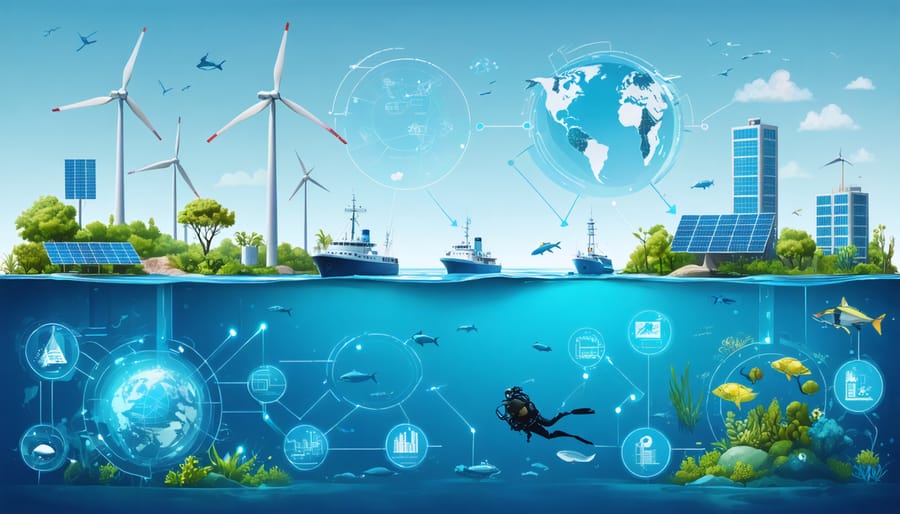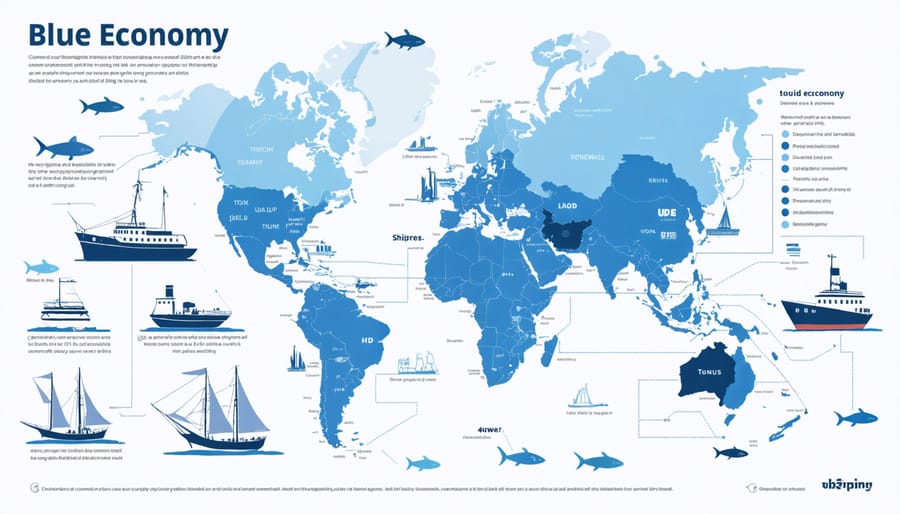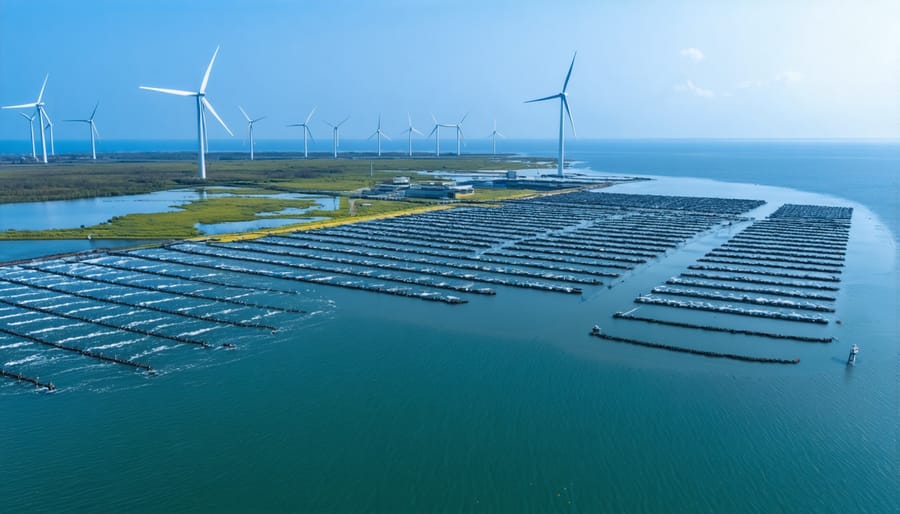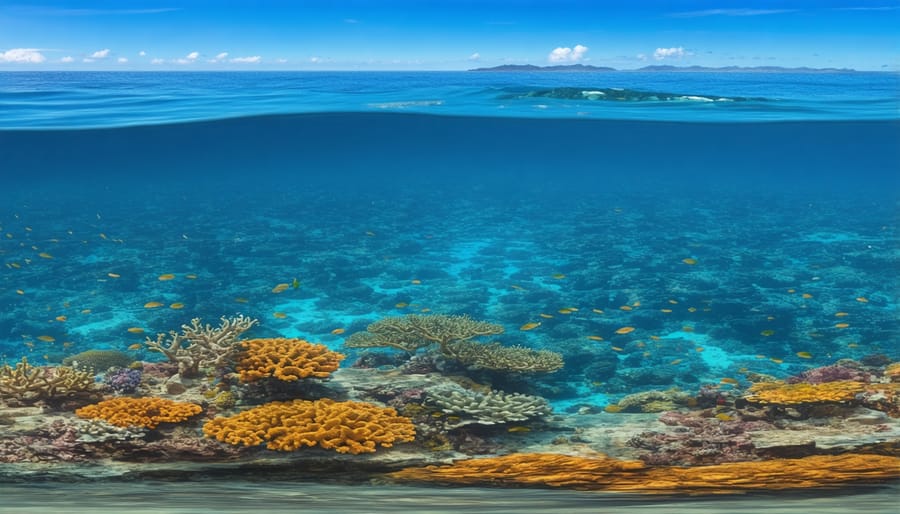
The blue economy represents a transformative approach to ocean-based economic development that balances marine resource exploitation with environmental sustainability. As coastal nations worldwide grapple with climate change and depleting resources, this revolutionary economic model offers a pathway to harness oceanic wealth while ensuring its preservation for future generations. By integrating sustainable fishing practices, renewable energy development, eco-tourism, and marine biotechnology, the blue economy generates an estimated $2.5 trillion annually while protecting critical marine ecosystems.
Unlike traditional maritime industries, the blue economy emphasizes circular economic principles, where waste becomes a resource and innovation drives environmental protection. From developing wave energy technology in Scotland to establishing sustainable aquaculture in Southeast Asia, nations are increasingly recognizing the vital role of ocean resources in building resilient economies. This paradigm shift not only addresses urgent environmental challenges but also creates millions of sustainable jobs across coastal communities.
As we face unprecedented environmental challenges, understanding and implementing blue economy principles has become crucial for policymakers, businesses, and communities alike. This comprehensive approach to ocean resource management represents more than just an economic model – it’s a fundamental reimagining of humanity’s relationship with our oceans, ensuring that maritime development serves both present needs and future sustainability.
What Is the Blue Economy?
Key Components and Sectors
The blue economy encompasses several key sectors that form the backbone of sustainable ocean-based economic activities. Traditional maritime industries like fishing and aquaculture remain fundamental components, supporting global food security while increasingly adopting sustainable practices. Coastal tourism represents another vital sector, including eco-tourism initiatives, marine sports, and recreational activities that generate significant revenue while promoting environmental awareness.
Maritime transport and shipping play a crucial role, with ports and harbors serving as economic hubs while implementing green technologies to reduce their environmental impact. Emerging sectors include marine biotechnology, which explores ocean resources for medical and industrial applications, and offshore renewable energy, particularly wind and tidal power generation.
Marine construction and infrastructure development form another significant component, incorporating sustainable design principles and ecosystem preservation. The extraction of marine minerals and resources continues under strict environmental guidelines, while innovative sectors like ocean monitoring and surveillance contribute to conservation efforts.
Waste management and marine pollution control have evolved into essential economic activities, creating opportunities for companies specializing in ocean cleanup technologies and plastic waste management. Supporting these sectors are marine research and education, conservation programs, and ecosystem restoration projects, which generate employment while advancing scientific understanding of marine environments.
Each sector within the blue economy operates under principles of sustainability, ensuring economic benefits while preserving ocean health for future generations.

Sustainable Development Goals Connection
The blue economy concept strongly aligns with several UN Sustainable Development Goals, particularly SDG 14 (Life Below Water) and SDG 8 (Decent Work and Economic Growth). This alignment demonstrates how sustainable ocean-based activities can contribute to broader global development objectives while protecting marine ecosystems.
The blue economy directly supports SDG 1 (No Poverty) and SDG 2 (Zero Hunger) through sustainable fisheries management and aquaculture development, providing food security and income opportunities for coastal communities. It also advances SDG 13 (Climate Action) by promoting marine renewable energy and protecting blue carbon ecosystems like mangroves and seagrass beds.
Furthermore, the blue economy’s emphasis on innovation and sustainable infrastructure contributes to SDG 9 (Industry, Innovation, and Infrastructure) and SDG 11 (Sustainable Cities and Communities). By promoting responsible resource management and circular economy principles, it also supports SDG 12 (Responsible Consumption and Production).
The interconnected nature of these goals highlights how the blue economy serves as a crucial framework for achieving multiple sustainable development targets while ensuring ocean health and prosperity for future generations.

Economic Value and Growth Potential
Global Market Opportunities
The blue economy presents significant market opportunities across various sectors, with projections suggesting a global value exceeding $3 trillion by 2030. Sustainable fisheries and aquaculture continue to show robust growth, driven by increasing global demand for protein-rich food sources. The offshore renewable energy sector is experiencing particularly rapid expansion, with investments in wind, tidal, and wave energy projects reaching record levels.
Emerging technologies in marine biotechnology offer promising opportunities, especially in pharmaceuticals and cosmetics derived from marine organisms. Sustainable tourism, including eco-friendly coastal activities and responsible cruise operations, represents another high-potential market segment. Additionally, innovative solutions for plastic waste management and ocean cleanup technologies are attracting significant investor interest.
Developing nations with extensive coastlines are increasingly positioning themselves as blue economy hubs, creating opportunities for international partnerships and investment. The growing focus on sustainable port development, green shipping, and marine conservation projects has opened new avenues for both public and private investment, supporting the transition toward a more sustainable ocean-based economy.
Environmental Conservation in the Blue Economy
Sustainable Resource Management
Sustainable resource management forms the backbone of the blue economy, emphasizing the responsible use and conservation of marine resources for long-term economic benefits. This approach integrates sustainable aquaculture practices with careful monitoring of fish stocks, marine minerals, and coastal ecosystems to prevent overexploitation.
Key management strategies include implementing science-based fishing quotas, establishing marine protected areas, and developing renewable energy solutions that harness ocean power while minimizing environmental impact. These practices ensure that marine resources can regenerate naturally, maintaining biodiversity while supporting economic activities.
Effective resource management also involves technological innovation, such as satellite monitoring systems for tracking illegal fishing activities and advanced water quality monitoring tools. Communities and industries are encouraged to adopt circular economy principles, where waste is minimized and materials are recycled whenever possible.
Success in sustainable resource management requires collaboration between governments, industries, and local communities, supported by robust policy frameworks and enforcement mechanisms. This collaborative approach helps balance economic development with environmental protection, ensuring the long-term viability of marine resources for future generations.

Success Stories and Case Studies
The Netherlands’ sustainable port development in Rotterdam showcases how blue economy principles can transform traditional maritime infrastructure. By implementing innovative waste management systems and renewable energy solutions, the port reduced its carbon footprint by 27% while creating over 385,000 jobs in the maritime sector.
In the Seychelles, a pioneering blue bond initiative raised $15 million for sustainable fisheries management. This program helped local communities transition to sustainable fishing practices while protecting vital marine ecosystems. The initiative led to a 20% increase in fish populations and improved livelihoods for over 1,000 small-scale fishers.
Norway’s aquaculture industry demonstrates successful integration of technology and sustainability. Their salmon farming operations utilize AI-powered feeding systems and underwater drones for monitoring, reducing feed waste by 30% while maintaining production levels. This approach has created a $7 billion industry that provides sustainable protein while minimizing environmental impact.
The Maldives’ coral restoration project combines tourism with marine conservation. Local resorts partner with marine biologists to restore damaged reefs, engaging tourists in conservation efforts. This initiative has successfully restored over 8,000 square meters of coral reef while generating sustainable tourism revenue.
Bangladesh’s mangrove conservation program illustrates how protecting natural assets can enhance climate resilience. The project created alternative livelihoods for coastal communities through sustainable aquaculture and ecotourism, protecting 6,000 hectares of mangroves while supporting 50,000 community members.
The blue economy represents a crucial paradigm shift in how we view and interact with our oceans. By embracing sustainable ocean development, we can create a future where economic growth harmoniously coexists with marine conservation. The success of initiatives worldwide demonstrates that protecting our oceans while generating economic opportunities is not only possible but essential for our planet’s future.
As we face increasing environmental challenges, the blue economy offers a blueprint for responsible resource management and innovation. Whether through sustainable fishing practices, renewable energy development, or eco-tourism, every sector can contribute to this vital transformation. The time to act is now – we must support policies promoting sustainable ocean use, invest in marine conservation projects, and make conscious consumer choices that protect our blue planet.
By working together – governments, businesses, communities, and individuals – we can ensure that the blue economy continues to grow while preserving our oceans for future generations. Your involvement, whether through supporting sustainable seafood initiatives, participating in beach cleanups, or advocating for marine protected areas, makes a difference in this crucial endeavor.
jessica
Ava Singh is an environmental writer and marine sustainability advocate with a deep commitment to protecting the world's oceans and coastal communities. With a background in environmental policy and a passion for storytelling, Ava brings complex topics to life through clear, engaging content that educates and empowers readers. At the Marine Biodiversity & Sustainability Learning Center, Ava focuses on sharing impactful stories about community engagement, policy innovations, and conservation strategies. Her writing bridges the gap between science and the public, encouraging people to take part in preserving marine biodiversity. When she’s not writing, Ava collaborates with local initiatives to promote eco-conscious living and sustainable development, ensuring her work makes a difference both on the page and in the real world.
